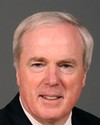It's a shared responsibility, because health care is largely provincial and territorial, and public health is local. It may happen in a thousand localities at the same time, but it's still a local event. And that's why you have local structures for public health medical officers, inspectors, nurses, and others, linked in to the hospital sector, etc.
Most of the legislation is provincial. It supports the local public health officers, and then we support the provinces and local public health officers, sometimes based on a request but obviously it's multiple jurisdictions. We also are the keeper of the pen, for lack of a better term, on the national pandemic plan and other plans, best practices, guidelines, etc. We work through the various expert committees and with the provinces and territories in terms of what that is. We also maintain stockpiles. We have the national emergency stockpile. We also have a joint stockpile of antivirals with the provinces for dealing with the pandemic of influenza and in our national emergency stockpile we have a range of equipment, drugs, etc., to support that. The planning in terms of what is needed happens at two levels. One is locally, what is needed; and then provincially, they make their decisions, and then we're part of the overall coordination of those activities.
In terms of the sharing of information, again it depends on its level. If it's a local outbreak in a nursing home, generally it's the local medical officer, etc., who will deal with it. If it's multi-jurisdictional or they need help, that's where we send in field epidemiologists and others to assist them with the investigation. We also have the reference lab, and we do the more sophisticated testing for strange bugs.



